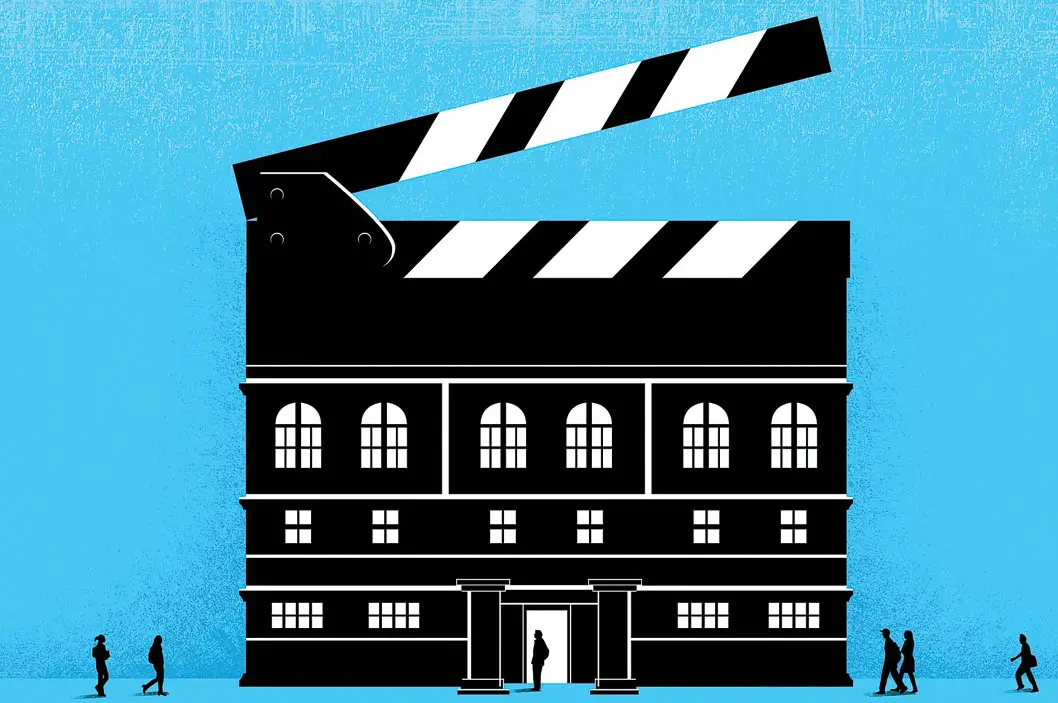Although many dream of pursuing art as a career, very few can. The artistic path is wrought with uncertainty when it comes to getting a job or getting paid. Film school is time consuming, expensive and fit only for the dedicated, but that doesn’t mean those who don’t want to be doctors or lawyers should give up on their dreams.
While it’s impossible to summarize an entire film school curriculum in just a few books, these five will make anyone feel like a film genius. So, for anyone unable to pursue their cinematic dreams on a collegiate level, here are five books that will make anyone ready to say “lights, camera, action!”
1. “In the Blink of an Eye,” by Walter Murch
Walter Murch is one of cinema’s most notable editors and sound mixers. Murch is best known for editing the films “Apocalypse Now,” “Ghost” and “The Godfather: Part III.” In his book, “In the Blink of an Eye,” Murch discusses everything from cutting in film to his “Rule of Six.” While the screenwriter writes a movie, a film editor does the same by cutting film. The job of the editor, however, is to be as invisible as possible, because when an edit feels weird or out of place, it distracts the viewer and takes them out of the world of the film.
Murch describes every cut as expressing an idea. Once the cut is made, a new idea presents itself that supports the cut before and after it. Editing is not for the weak, and editors are known as vampires for spending so much time inside the editing lab. Murch describes editors as the ones who take dreams and organize them into a tangible story. All aspiring editors should give this short non-fiction a read.
2. “Writing Subtext,” by Dr. Linda Seger
The second hardest job a screenwriter has is to create genuine dialogue, but the hardest is writing subtext. Dr. Linda Seger’s “Writing Subtext” is a short, to-the-point explanation on subtext and how it works.
Subtext is what is not being said; it’s reading between the lines. A film without subtext is very plain and boring, as subtext adds conflict, which is vital to compelling narrative. Seger gives a great example describing the concept’s role in film, writing, “The subtext can often be found in what the character doesn’t put on his or her resume.” Whether the character is modest, embarrassed or has a secret, what isn’t being said gives a character their essence. Subtext is a tricky concept, but with Seger’s help it’ll be easy to master in no time.
3. “Film History: An Introduction,” by Kristin Thompson and David Bordwell
Kristin Thompson and David Bordwell’s “Film History: An Introduction” is a must-read for a global understanding of film history. The heavy book is divided in chapters that cover genre, history from the United States to China, and the advancement in technology over the years. The book does a fantastic job at explaining how war throughout history affected films in different countries, and makes it apparent that history is the most important factor for a movie’s setting.
Films like “The Bicycle Thieves,” “Ivan’s Childhood” and “Rashomon” are all set in post-war countries (Italy, the Soviet Union and Japan, respectively) with protagonists who are heavily influenced by war. It is hard to imagine that the tome is only an introduction because of its length, but it is a great start to learn the origins of cinema.
4. “The Hero with a Thousand Faces,” by Joseph Campbell
This book is not an easy read by any means. Joseph Campbell’s “The Hero with a Thousand Faces” is one of the hardest yet most inspiring pieces of fiction in the last hundred years.
This book, of Campbell’s many masterpieces, is a mythological understanding of the hero’s journey. No matter what aspect of film you want to pursue, “Thousand Faces” is an essential read for a comprehensive understanding of the protagonist’s call to action. George Lucas, writer and director of the “Star Wars” franchise, has cited the book as a major influence on his work. Lucas even shares his opinion on its back cover:
“In three decades since I discovered ‘The Hero with a Thousand Faces,’ it has continued to fascinate and inspire me. Joseph Campbell peers through centuries and shows us that we are all connected by a basic need to hear stories and understand ourselves. As a book, it is wonderful to read; as illumination into the human condition, it is a revelation.”
This book is only for the brave, and will require a highlighter, pen and willingness to annotate.
5. “The Anthropology Art and Cultural Production: Histories, Themes, Perspectives,” by Maruska Svasemaruska Svasek
This anthropological study looks deep into the birth and growth of art. Svasek’s “The Anthropology Art and Cultural Production” is a thought-provoking appreciation of theories and observations focusing on the creation of art and its effect on society. Essentially, the author tries to answer one of the most difficult questions of all time: “What is art?”
In the book, Svasek considers the aesthetics of everyday life and how much of quotidian life is filled with art. She also discusses the effect of place upon art, as creativity often interacts with religion, politics, geography and any number of other important factors. Indeed, if you ever have wanted to have a working answer to one of life’s stickiest questions, Svasek’s canonical text is a great place to start.
















